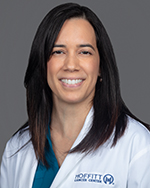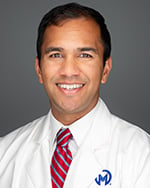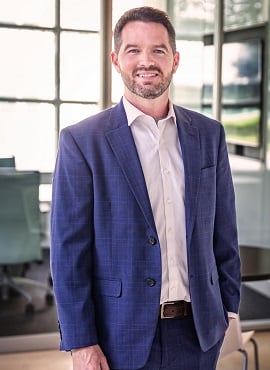Aggressive Oral Cancer Cases Stand Out in Younger Patients
According to the American Cancer Society, the average age of patients diagnosed with oral cavity and oropharyngeal cancers is 63, but just over 20% of cases occur in patients younger than 55. When someone is diagnosed even younger than that, doctors tend to take extra notice.
“It just stands out in your head a little bit more,” said Dr. Michelle Echevarria, a head and neck radiation oncologist at Moffitt Cancer Center. “When you have a patient in their 20s or 30s who has no past medical history, that doesn’t smoke or drink, you start to wonder why they’re getting this type of cancer.”

Katie Drablos is putting this younger patient population in the spotlight. The 35-year-old recently told the “TODAY Show” that what she thought was a canker sore turned out to be something much worse.
“Because of the placement it was hard for me to see it. If it had been on the tip of my tongue I’d probably would have been like, ‘Oh that doesn’t exactly look like a normal canker sore,’ ” said Drablos. “Within one second (my doctor) was like, ‘We’re going to biopsy this right now,’ ” Drablos recalled. “This was more serious than I predicted.”
Katie Drablos noticed a canker sore on the back of her tongue that wouldn’t go away. As the pain increased, she visited urgent care, wondering if it was a COVID-19 symptom. It wasn’t, and when she didn’t improve, she learned why: She had tongue cancer. https://t.co/rLKonHBNTw
— TODAY (@TODAYshow) April 24, 2022
Drablos was initially diagnosed with stage 2 tongue cancer. After she underwent surgery to remove the tumor on her tongue, her doctors discovered that her cancer had spread to her neck. Her diagnosis had suddenly become stage 4.
The concern for doctors who treat this younger patient population with head and neck cancer is the lack of answers when it comes to figuring out why these diseases can be worse than in their senior counterparts.
“These younger patients seem to have very aggressive disease,” said Dr. Kedar Kirtane, assistant member in Moffitt’s Head and Neck Oncology Program. “There is no reason someone in their 20s with no history should get a horrible oral cavity cancer.”

Dr. Kedar Kirtane, Head and Neck-Endocrine Oncology Program
The answer may lie in a patient’s genetics. Both Kirtane and Echevarria will regularly refer patients for genetic testing, but so far, no definitive links have been found. That doesn’t mean the answers aren’t there. Researchers just need more time to find them.
“Fifteen years ago we didn’t know that HPV causes oropharynx cancers,” said Kirtane. “Now we know that, and it is a distinct epidemiologic entity. What I envision, maybe 10 years from now we’re going to look back and find out that a certain mutation or marker is causing this aggressive disease.”
While doctors continue to search for the cause, they do know that there is a patient population in head and neck cancer with limited options and significant needs.
“We need to look at these younger patients that have more aggressive disease,” said Echevarria. “We’ve used the same types of treatments for many years. Do we need to do something different to improve outcomes? There are some clinical trials in the works for these groups, but there is much to improve on. There is a lot more clinical research that needs to be dedicated to these patients.”



